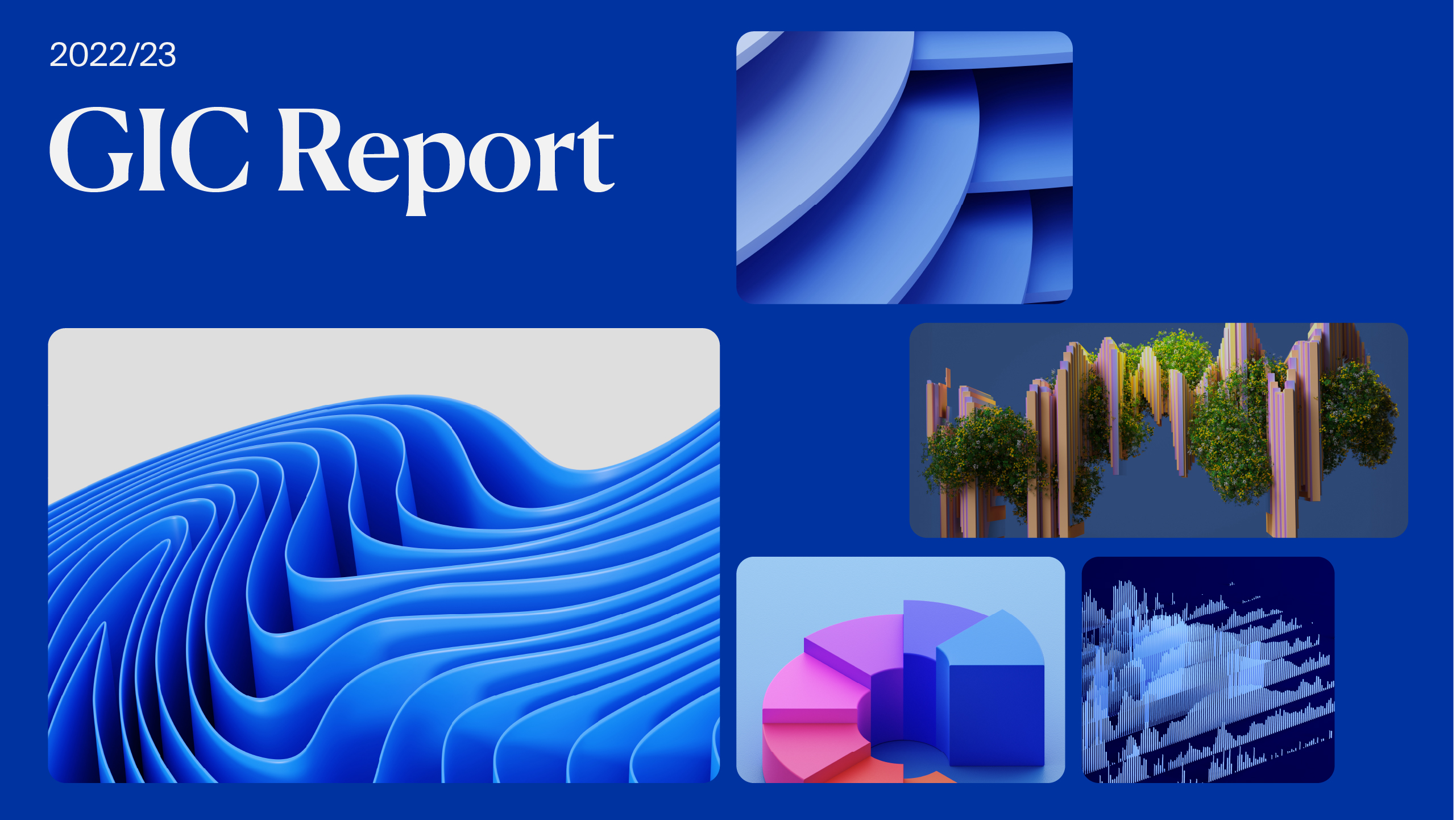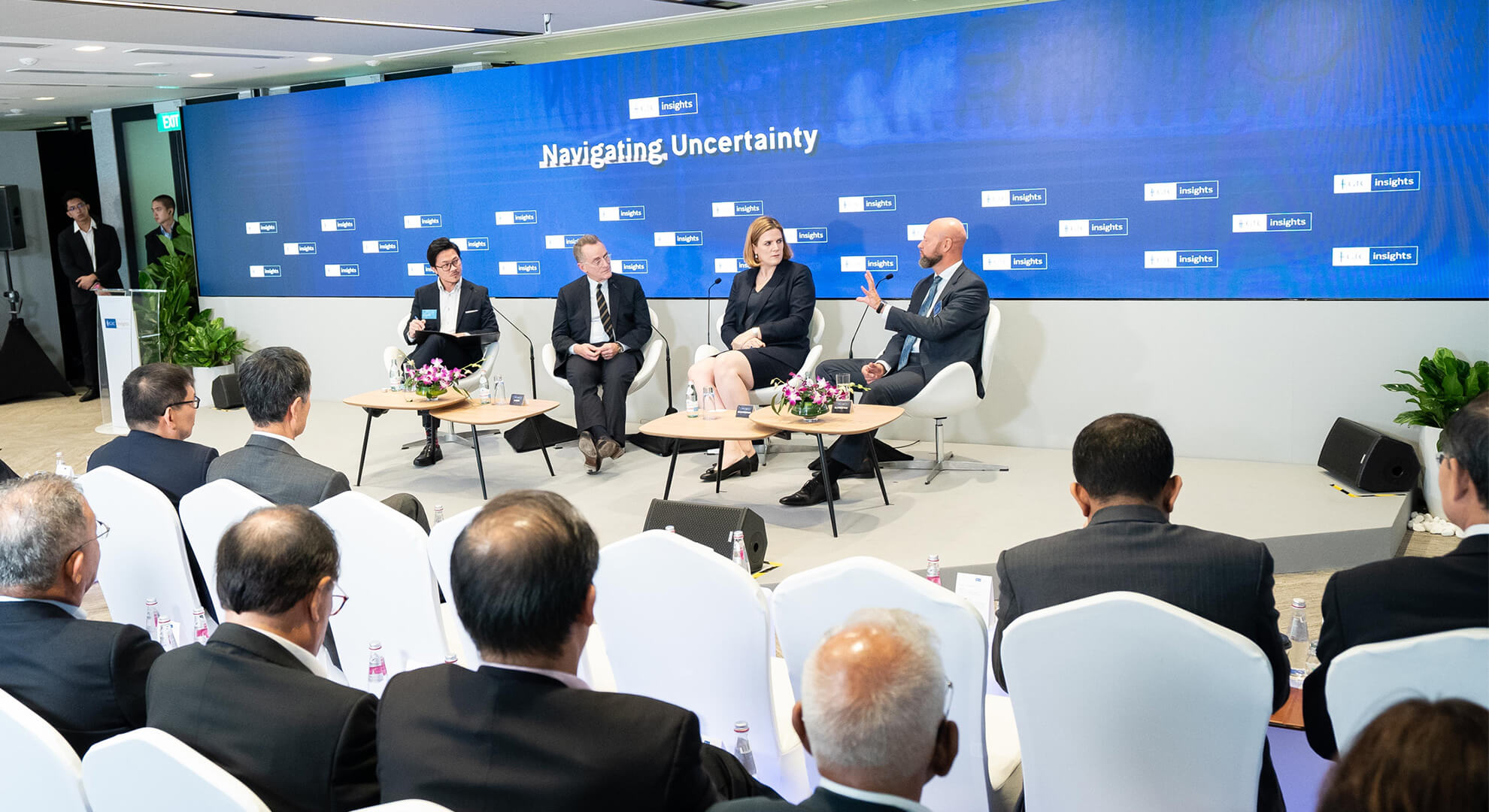This article presents takeaways from a session at GIC Insights 2019, where Oaktree Capital Management Co-Chairman Howard Marks, BlackRock Chair of Asia Pacific Dr. Geraldine Buckingham, and Norges Bank Investment Management CEO Yngve Slyngstad discussed the challenging path ahead. This was moderated by Kevin Bong, GIC’s Director of Economics and Investment Strategy. GIC Insights is our annual flagship event that gathers a select group of prominent business leaders to deliberate over long-term issues pertinent to the international business and investment community.
The economic, political and investing environments of today are much more complex and uncertain, given the mature business cycles in key economies, continued populist and geopolitical pressures, and limited government policy tools. The rise of financial risks due to high corporate and non-banking leverage, crypto-currencies, and weakening credit quality and tightening liquidity add to the complexity.
Uncharted waters
The global economy is in unfamiliar territory – a market cycle that is long in the tooth, exceptionally low and even negative interest rates, heightened trade and geopolitical tensions, a breakdown in public trust, and rapid technological change.
Globalisation, a key driver of growth and returns in the past half century, appears to have slowed and is at risk of unwinding. Inequality has provided a platform for populism to rear its ugly head. The risks and opportunities of a Green Revolution and continued technological disruption further widen the range of possible outcomes. Investors have to prepare themselves for any one of multiple, disparate futures.
Globalisation: Uncertainty and the path ahead
Globalisation has arguably done much good for the world. It has opened up new markets, and encouraged greater cross-border trade, investment and movement of labour. This has in turn allowed for greater competition and greater economies of scale, ultimately leading to greater growth. However, while the returns from globalisation growth are evident, the distribution of these returns has become increasingly contentious. Inequality in wealth, income, and opportunity has become increasingly pronounced, and social pressures are likely to continue rising as jobs are disrupted by technological advances and automation, and as populations age with inadequate retirement savings. While globalisation may be associated with some of the symptoms, it is often cited as the root cause and subject to significant backlash.
That said, the case for continued globalisation remains strong, driven by three factors: continued urbanisation, technological advances, and a generational shift in leaders.
Continued urbanisation: By 2050, around two-thirds of the world population is projected to live in urban areas. The UN estimates that India, China, and Nigeria will account for 35%of that growth, adding 416 million, 255 million, and 189 million urban dwellers respectively. As more people live in cities, they will engage in more “international” lifestyles, and adopt a correspondingly positive attitude towards globalisation. We already see this in the continuous increases in foreign visitor flows, especially from emerging markets such as China.
Technological advances: Technology has enabled cross-border interactions across markets and businesses, and the creation of a global market. For many emerging economies, it has allowed the leapfrogging of business and social models to take place, including faster and more holistic integration with the rest of the world.
Globalised leadership: The rising talent of today – and leaders of tomorrow – will have grown up in a highly globalised world, and are more likely to view economic, social, and political openness more favourably.
Asia has been a significant beneficiary of globalisation in terms of economic growth and the financial deepening and development of capital markets. The region has learnt a lot through past crises, and has expended considerable effort in building greater resilience. The next test of its markets and policy responses will likely cement Asia’s place in the global financial markets.
The Green Revolution: Prompting an investment rethink
A second key source of uncertainty and also growth is the “green agenda”, or sustainability’s evolving and increasing role in the business environment. Companies are increasingly called upon – or naturally coming round to the idea – to focus more on stakeholder value, instead of just shareholder value. Today, many of the world’s largest companies are owned in meaningful proportion by financial institutions and pension funds whose stakeholders tend to form a large part of the population. As such, as more of these stakeholders become more aware of the value and scarcity of natural capital, they will prompt a rethink in the key performance metrics for their portfolio companies.
While different parts of the world are at different stages of the sustainability revolution – with Europe leading, followed by North America, and then Asia – we are starting to see capital movement along this trend. Investors are keen to understand the impact of Environmental, Social, and Governance (ESG) considerations on their investment decisions, and portfolio risk and performance, while companies are mindful of its influence in attracting and retaining socially conscious millennial employees.
Challenges remain, however. For one, investors and policy-makers alike are finding difficulty in pricing the associated risks and externalities accurately. Second, while terminology and the available data sets are improving, they are still not clearly defined. There is thus a need to co-ordinate and develop a set of international measurable standards so as to encourage more companies to adopt ESG initiatives.
Maintaining optionality with technological disruption
Finally, rapid advances in technology will continue to create great opportunities and challenges.
An example that has gained prominence in recent years is Distributed Ledger Technology (DLT) – more commonly known as “blockchain”. While the technology’s transformative potential is clear, it has yet to gain broad social acceptance due to governance and regulatory concerns. Regulators will have to formulate solutions that address key issues around the privacy of data, expandability of results, accountability for decisions, and the acceptability of outcomes.
Importantly, blockchain cannot be seen as the solution to every issue. Instead, its impact is optimised under certain conditions, where there:
- Are multiple parties involved,
- Is no natural trusted central party, and
- Is a need for a detailed ledger of transactions and transfer of ownership.
Accordingly, one area where blockchain would have a strong use case is cross-border payments, as there is currently no global central bank. Transferring money between countries is laborious, costly and inefficient, and an interbank transfer may take up to two to three days.
Crypto-tokens, on the other hand, have different properties depending on their respective use cases, which can vary from an Initial Coin Offering (ICO) to payments. Recent developments, such as Libra by social media company Facebook, offer the prospect of a stablecoin pegged to a basket of currencies. However, this continues to be a work-in-progress as the full mechanics and issues, such as the supply of the coins and impact on currencies excluded from the basket, are yet to be ironed out.
In an era of accelerating technological change, the broader lesson for investors is to maintain optionality by being involved in all of these technologies, being clear of their use cases, and being nimble enough to move when conditions change.
Moving forward: A more complex anchor
Ultimately, for investors, the core principle should still be to find good businesses at reasonable prices. However, as the drivers of uncertainty continue to persist, so will the definition of a good business evolve. Where investing used to focus on looking after shareholders, investors today have to also take into account wider sociopolitical issues, ESG considerations, and an ever-evolving technology environment. So while the principle has remained unchanged, its execution and application have become significantly more complex.






